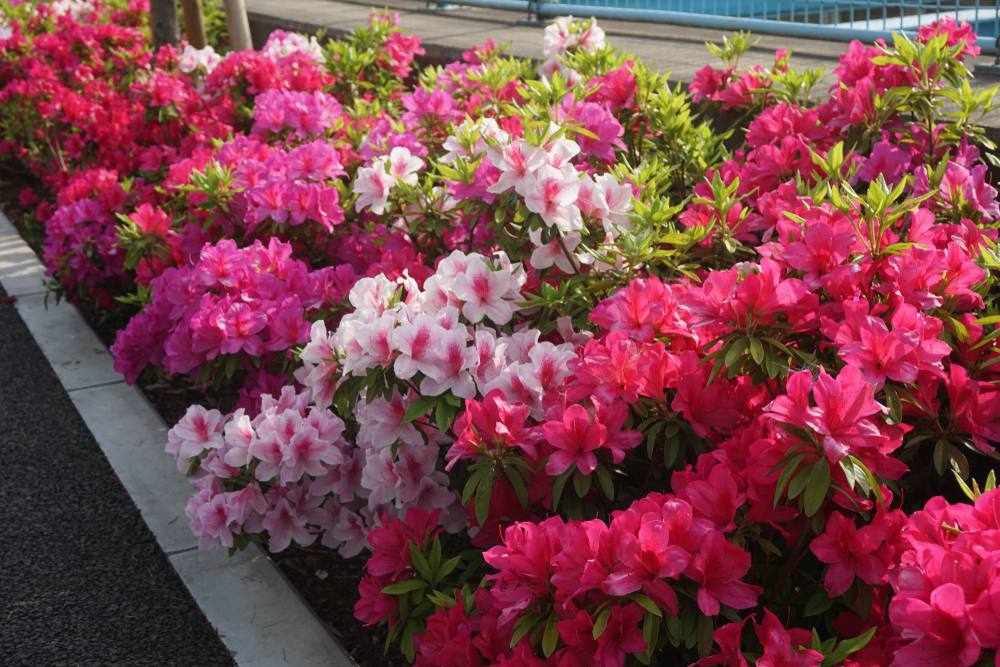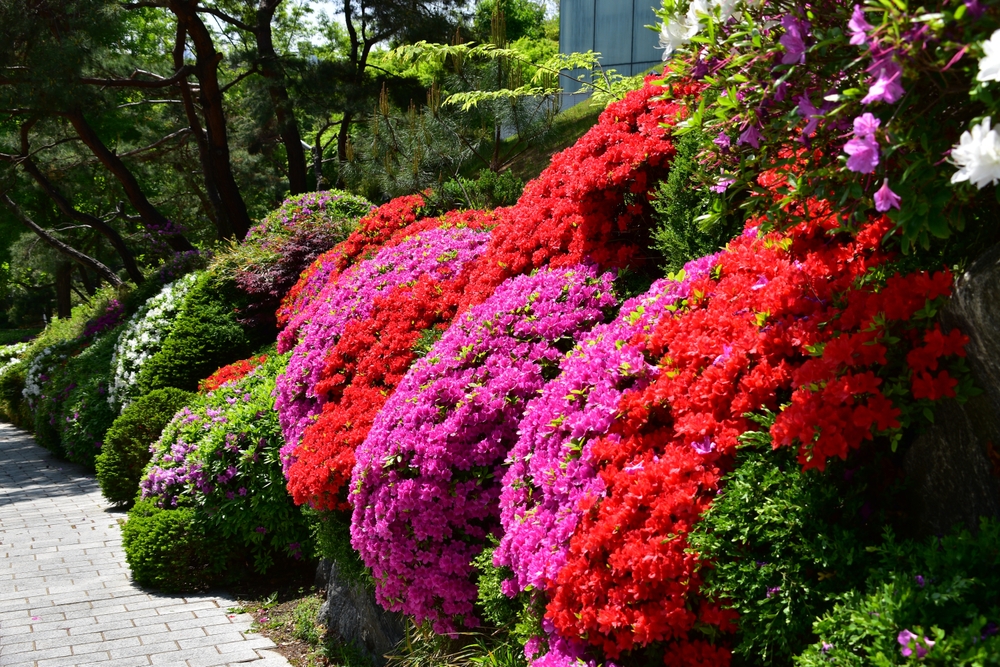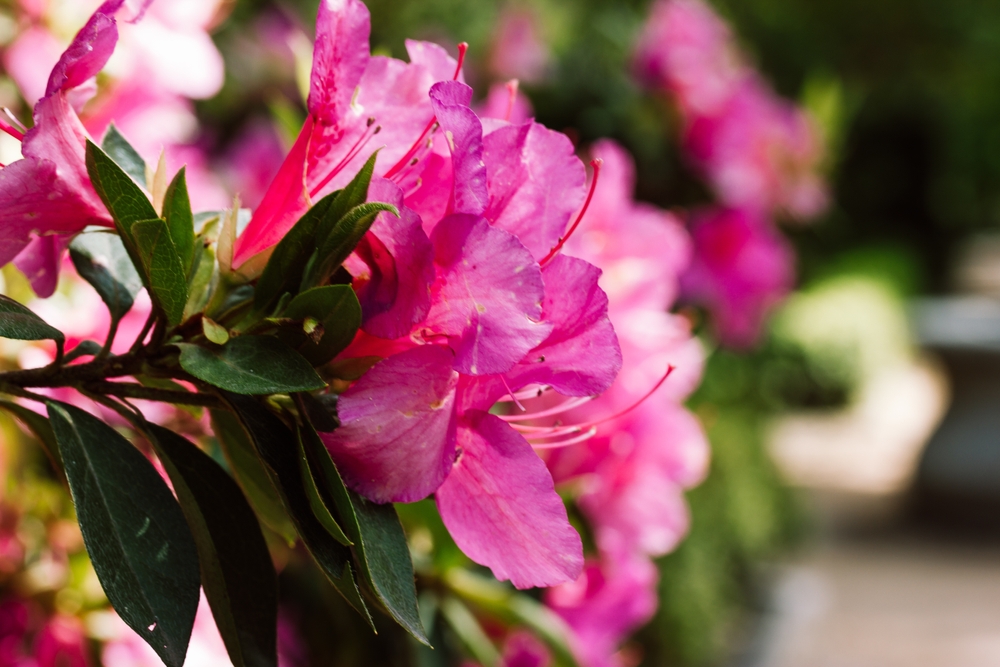Home Growing Japanese Azaleas: A Colourful Addition to Any Garden
Growing Japanese Azaleas: A Colourful Addition to Any Garden
Japanese azaleas, also known as evergreen azaleas, are part of the rhododendron family (Rhododendron japonicum), and are a popular plant for gardens across the world for many reasons. These stunning plants brighten gardens with colourful flowers and beautiful foliage to create a sanctuary for wildlife, including bees. However, growing Japanese azaleas may be a daunting task for many, and could be the reason why you haven’t taken the step to get one for yourself—so, let’s break down everything you need to know.
Why Choose Japanese Azaleas for Your Garden?

Before you decide to start growing Japanese azaleas in your own garden, you should ask yourself why. Fortunately, the answer is simple: they are beautiful and vibrant, suit many different styles of garden, are relatively compact, quite easy to care for in parts of the UK, and they are a haven for bees and other wildlife.
Here are the top reasons for growing Japanese azaleas in your garden:
- Stunning flowers and range of colours
- Suitable for many different garden styles and aesthetics
- Don’t take up a lot of space compared to other shrubs
- Easy to care for in milder parts of the UK
- Attract bees and other important wildlife
Planting Japanese Azaleas: Where, When, and Key Details

Growing Japanese azaleas is very doable in parts of the UK, especially in the south, where the climate is milder. However, you can enjoy these plants in any part of the UK, provided you have a conservatory or something similar where the plant can thrive in pots.
Below, we will go through what you need to know about where you should plant your azaleas, the best times of year to plant, and the soil needed for these plants to thrive. Following the rules, you will quickly notice your azaleas begin to thrive, and you will get to enjoy their stunning flowers when the time comes.
Where Should You Plant Japanese Azaleas?
When planting azaleas, choose a location in your garden that is semi-shaded and sheltered from harsh wind and rain. As these plants have shallow roots, they can easily get damaged in severe weather. Azaleas can do very well in suitably-sized garden pots, as well as woodland borders.
Most azaleas will not thrive indoors, especially if you keep the heating up and humidity down. Avoid keeping them in dry, warm conditions for too long, or they will suffer. If you would like to keep your Japanese azaleas indoors, the most suitable room would be a conservatory, where there is good ventilation and bright light without too much direct sunlight.
When is the Best Time of Year to Plant Them?
The best time to plant Japanese Azaleas is in the spring or autumn, where temperatures are milder. These are shallow-rooted plants, and you need to be careful to plant the rootball near the surface. Ensure that you dig a hole that is wider than it is deep, and backfill with the correct soil with some peat-free ericaceous compost or leaf mould before watering it well
What Type of Soil Do Japanese Azaleas Thrive in?
Growing Japanese azaleas un humus-rich soil that is neutral to acidic and well-draining. We advise you to use a kit to test the soil pH, or check the gardens in your area to identify azaleas and how well they are doing. If you notice these plants thriving in other gardens around you, your plants will likely thrive, too!
As these plants do not do well in alkaline soil, you will need to plant them in pots if your soil has a pH above 7.0. Use peat-free ericaceous compost for potted Japanese azaleas to get the best results with your plants.
How Do You Care for Japanese Azaleas Year-Round?

To start growing Japanese azaleas, you need to be aware of the care that these plants require. Generally, they are not the most hardy plants, but they will do well in mild climates where they can get the water and light they need. Try to keep these azaleas in temperatures between 15°C and 24°C for the best results, and be mindful of types of fertiliser, soil pH, and more.
Notes on caring for Japanese azaleas:
- WATERING: water using rainwater (if possible) as and when needed, making sure to keep the soil moist, but not soggy. Stick a finger into the soil to check this before watering. Avoid watering the plant with hard water.
- LIGHT: avoid direct sunlight, and choose a location with dappled sunlight for the plant to thrive and avoid having its leaves burned.
- FERTILISING: fertilise as needed, looking out for pale or small leaves, yellowing leaves, leaf chlorosis, and more. Use natural fertiliser where possible, avoiding chemicals that can damage the plant’s roots
- REPOTTING: repot when the plant becomes root-bound, or every two years either in the spring or after they have flowered (typically in June/July), making sure to size up the plant pot if needed
- SPACE: depending on the size of your plant, you need to pick a suitable location for it to grow in, and take the surroundings into consideration. Japanese azaleas can grow to be 80 cm tall, and need adequate space for this
- SOIL PH: seek soil slightly acidic, with a pH between 4.5–6. Any higher or lower, and the plant will suffer. Ensure that you use the correct fertiliser, and plant your azaleas in pots if the soil in your area is alkaline.
What Are Some Common Mistakes, and Can You How to Avoid Them?
Like any plant, there are some common mistakes to be aware of when growing Japanese azaleas. From planting the rootball too deep in the soil, using the wrong type of soil, and damaging your plant through hard water or alkaline fertilisers, you need to know the dos and don’ts if you want your plants to thrive in your garden (and who doesn’t want that?).
Some common mistakes to be aware of with these plants include:
- Planting too deep – plant the rootball just a few millimetres from the surface — any deeper, and it will not thrive
- Incorrect soil – ensure that you use well-draining soil that is the correct pH in order for these plants to do well
- Too much sunlight – azaleas do not thrive in direct sunlight, and will be damaged if left in the sun. Pick a suitable spot to plant where there is partial shade or dappled sunlight
- Not enough water – keep soil moist, but not soggy. Wet soil without air will result in root rot, which will quickly kill your plant (stick your finger in the soul to determine if it needs watering or not)
- Wrong water type – for the best results, use rainwater for your Japanese azaleas, as this will ensure that the soil’s acidity remains stable. Hard tap water can reduce acidity in the plant’s roots, so keep this to a minimum where possible
- Incorrect fertiliser – keep the soil’s pH correct, and avoid using alkaline-based additives in fertiliser. Stick to organic options like seaweed or fish as well, as these plants are susceptible to chemical burns on their roots
Why West Somerset Garden Centre Recommends Japanese Azaleas for Any Garden

Create the perfect garden paradise by growing Japanese azaleas and nurturing them into bold and beautiful plants. Pair the scene with tranquil wind chimes and grow something to be proud of.
Visit West Somerset Garden Centre for expert planting advice and a colourful range of Japanese Azaleas perfect for Somerset gardens. Or, have a look at our blogs on growing vegetables in your garden, securing plants with clips and twine, planning your garden for colour year-round, or tips for preparing your garden for winter.
